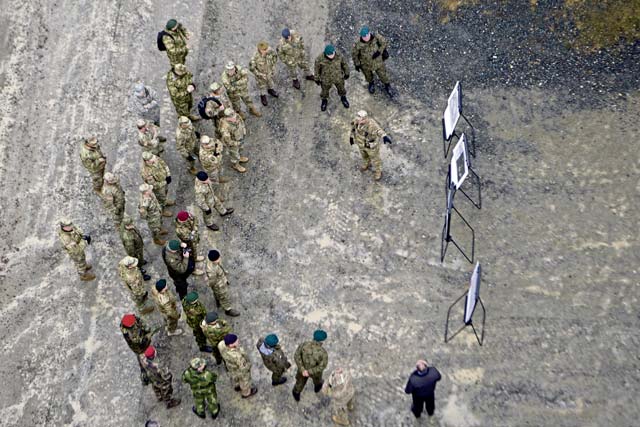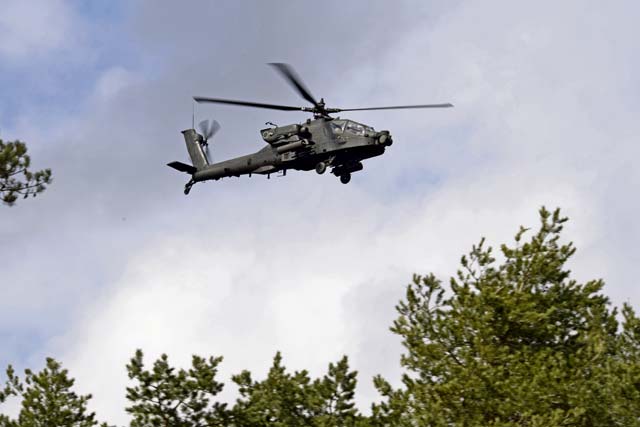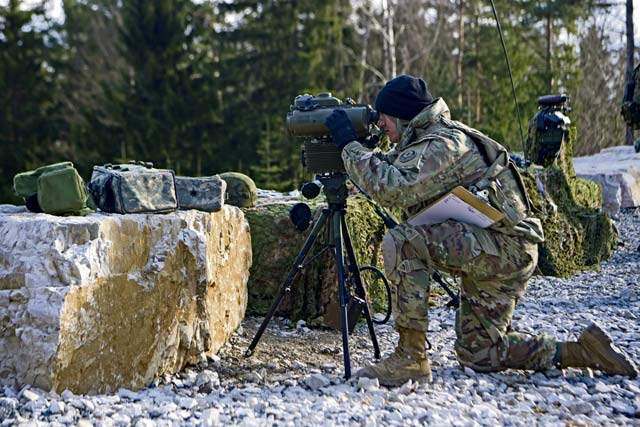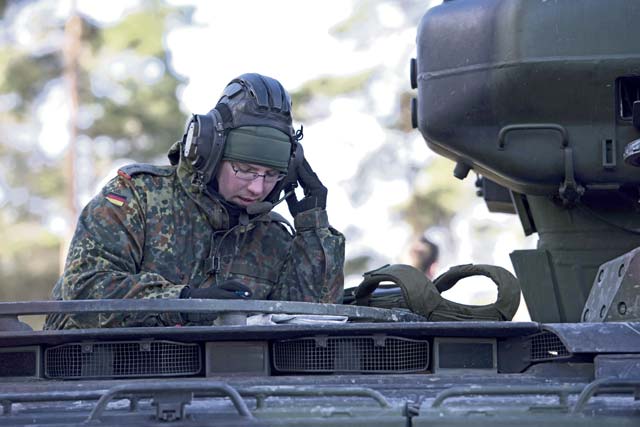
U.S. ARMY GARRISON BAVARIA, Germany — Airmen assigned to Ramstein’s 4th Air Support Operations Group Detachment 1 supported U.S., allied, and partner nations during exercise Dynamic Front 18, held Feb. 23 to March 10, at U.S. Army Garrison Bavaria, Grafenwoehr, Germany.
Dynamic Front 18 is a U.S. Army-led exercise involving approximately 3,700 participants from 26 nations. The exercise focuses on U.S., NATO and multinational units working together to execute multinational artillery fire and test interoperability of both tactical and theater-level fires systems in a live environment.
“The detachment’s mission is to observe, coach, and train air/land integration; not to just U.S. forces, but to all multinational joint terminal attack controllers here in Europe,” said Air Force Lt. Col. Patrick Foley, 4th ASOG, Det. 1 commander. “One of our focus items is interoperability. Human, technical and procedural interoperability amongst JTAC and the larger force as a whole.”
The Det. 1 tactical air control party team functioned as an observer, coach and trainer team or OCT, based at Joint Multinational Readiness Center Hohenfels. Nicknamed “Bullseye,” the OCT team trained foreign JTACs to call close-air support during exercise Dynamic Front 18.
“The mission of a JTAC is to be a liaison between the Air Force and Army,” said U.S. Air Force Staff Sgt. William Cole, 4th ASOG Det. 1 TACP field instructor. “JTACs are a big force multiplier, if we can all stay on the same page, we can protect allies and partners, and make our forces stronger.”
Cole added that training is important because JTACs have the ability to give ground commanders integration with close-air support, as they are the delivery method to tell aircraft what kind of bombs to drop, when to drop them and where.
Foley said Det. 1 Airmen train members in live scenarios and virtual simulators to provide a well-rounded, replicated multi-domain warfare environment. He noted that training sustains readiness of JTACs, close-air support air crew members, and ground artillery teams, ultimately leading to the deterrence of future or potential adversaries — and if need be — a response to any sort of aggression.
Coaching held during the exercise grew partnership between U.S. military branches and participating nations.
“Unless we train together, we’re not going to know how to fight together,” said Foley.





